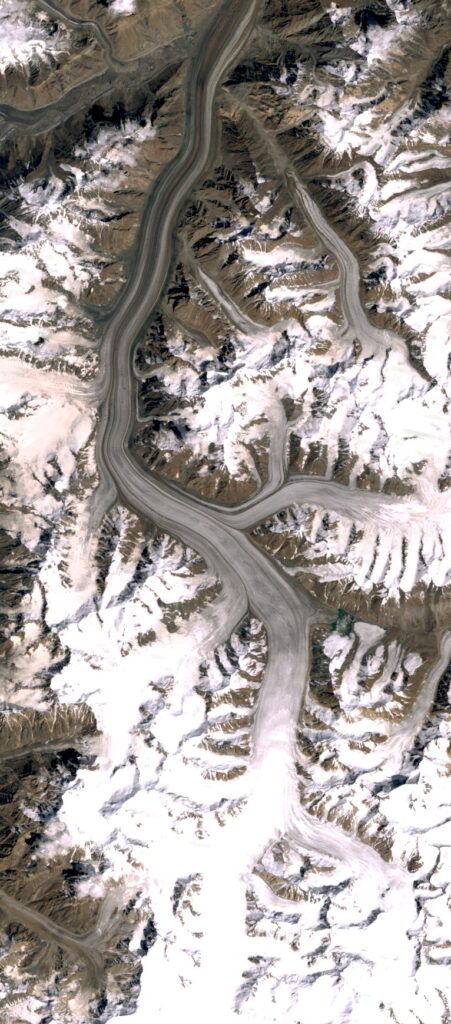The 2013 annual meeting of the UNESCO World Heritage Program ended on June 27, the date on which I consider the formal decisions of the meeting occurred. At that meeting, UNESCO added five sites to its World Heritage List. The five comprise three mountainous ecosystems (Mount Etna, Italy; the Tian Shan mountains, China; Tajik National Park, Tajikistan) and two desert ecosystems (Namib Sand Sea, Namibia; El Pinacate and Gran Desierto de Altar, Mexica).

All are worthy of discussions and exploration—they wouldn’t be World Heritage sites if not—but I’d like to delve more deeply into the Tajik National Park. Tajik is also known as Mountains of the Pamirs, because the park encompasses that entire mountain range. Not that it is easy to define a mountain range in that part of the world. Tajik covers what geographers call the “Pamir Knot,” a tangled mess of mountains that radiate outward from the park. The mountains are the outcome of collisions between the Indian-Australian and Eurasian tectonic plates. These mountain ranges are exceptional as the highest in the world, including the Himalayas (where Mt. Everest is) and Karakorum (where K2 is) mountains. The Pamir Mountains themselves stand just below those two ranges as the third highest mountain range in the world.

Tajik was the first national park created in the old USSR, the country that split into pieces—including Tajikistan—at the beginning of the 1990s. The park is huge, covering 9653 square miles (about the size of Vermont), a whopping 18% of the entire country. Hardly anyone lives there because it is so remote and the climate is so harsh. The landscape is mostly high mountains, interspersed with some of the world’s deepest valleys and large treeless plateaus at high elevation. The highest peak is Ismoil Somoni at 24,590 feet, the 50th tallest in the world (the mountain has had some interesting names—first called Stalin Peak, and then Communism Peak before the current name, after an historical leader). The park is home to scores of glaciers, including the Fedchenko Glacier, the longest (about 30 miles) outside of the polar regions. More than 170 rivers and 400 lakes complete the ecosystem.

Tajik National Park is home to many rare and endangered species. More than 100 endemic species live there, along with charismatic species of brown bear, snow leopard, Marco Polo Argali sheep,and Siberian ibex. UNESCO considers the park to be well protected and of special value because it is so huge and undisturbed by human development. Unlike most other glaciers, the Fedchenko Glacier is not losing mass because of global warming. It is covered in thick layers of rock and dirt, which insulate the deeper ice. The park also contains the 47-mile-long Lake Sarez, which was dammed up a century ago when a natural landslide formed the highest natural dam in the world (Uzoi Dam). In plain terms, there is no place like it in the world!
References:
IUCN. 2013. Tajikistan gets its first natural World Heritage Site. 21 Jun 2013. Available at: https://www.iucn.org/content/tajikistan-gets-its-first-natural-world-heritage-site. Accessed March 9, 2020.
NASA Earth Observatory. Stable Fedchenko. Available at: https://earthobservatory.nasa.gov/images/84996/stable-fedchenko. Accessed March 9, 2020.
Natural Heritage Protection Fund. Tajik National Park. Available at: http://www.nhpfund.org/sng/tajik-np.html. Accessed March 9, 2020.
UNESCO World Heritage. Tajik National Park (Mountains of the Pamirs). Available at: https://whc.unesco.org/en/list/1252/. Accessed March 9, 2020.
World Atlas. Tajikistan National Park – Mountains of The Pamirs. Available at: https://www.worldatlas.com/articles/tajikistan-national-park-mountains-of-the-pamirs.html. Accessed March 9, 2020.
